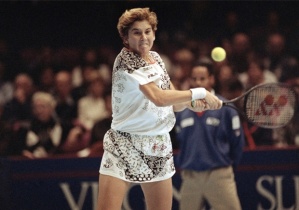
Image: tennis.com
Hans Van Tartwijk is an experienced business leader who has spent the last eight years as a partner with Princeton Property Partners. Away from his activities in the real estate industry, Hans Van Tartwijk enjoys playing tennis.
Individuals beginning to play tennis for the first time must make a decision between a one-handed and two-handed backhand. However, a less-discussed topic involves choosing between one or two hands on the forehand. Though the shot is essentially absent from the modern game, particularly at the professional level, it has been used by some of the most successful players in tennis history.
American Monica Seles used a two-handed forehand on her way to nine Grand Slam titles, while France’s Marion Bartoli won Wimbledon in 2013 using the stroke. Other successful players to use two hands on the forehand side include four-time Grand Slam champion Pancho Segura, 2014 US Open semifinalist Peng Shuai, and storied shot-maker Fabrice Santoro.
For amateur and recreational players, it may seem more enjoyable to replicate the forehands of more recognizable names like Serena Williams and Roger Federer. Before embracing the modern forehand, individuals should familiarize themselves with the benefits of a two-handed shot. Using two hands for the forehand provides a player with improved stability, as it does on the backhand side. This can be particularly advantageous for young children and individuals lacking arm and upper body strength. Improved stability also can lead to enhanced consistency. Some have even claimed that two hands provides more power.
There are, of course, a number of drawbacks to the two-handed forehand approach. Using two hands on either the forehand or backhand side limits a player’s reach. On the forehand side, two hands can also make it challenging to hit a spin-heavy ball, a necessity in today’s game. The court of public opinion should not be overlooked either, particularly for those who simply play tennis to have fun. While the one-handed backhand may be rare, the two-handed forehand is essentially extinct and may draw some unwanted attention. However, it is up to the individual to determine what kind of forehand will yield the best results and most fun on the court.





